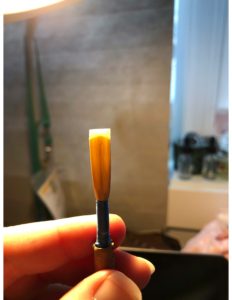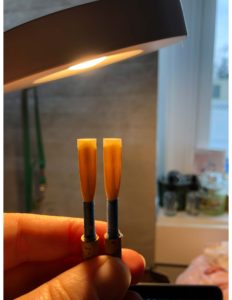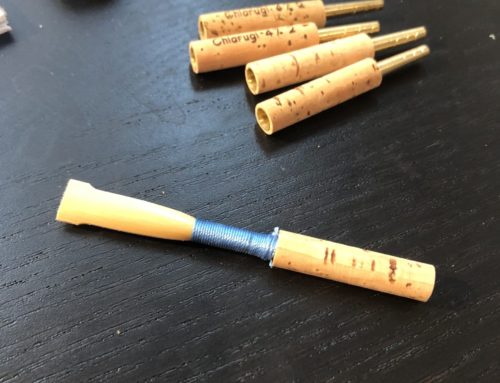This post is how I make American long scrape reeds at A=442. I am sure there are lots of other ways, but this is the way I have settled on after several years of experimentation.
First of all, this is not a need that everyone will encounter. But I first realized I needed it when I went to Italy and played in a summer festival that was at A=442, and then would rise along with the temperature! The first thing I tried was just simply keeping everything the same as my normal A=440 reeds only on a shorter staple, 46 mm versus my normal 47 mm. This got me most of the way there with some lipping up. That was really very tiring and not a sustainable choice. So then I started to experiment with different shapes, narrower in particular. Eventually I settled on a slightly narrower shape than I typically used and stayed with the 47 mm staples. I kept this as my setup for about 5 years and it seemed to work fine.
Then I stopped playing in places that were A=442 and so I stopped keeping 46 mm staples in my supplies. Of course, the moment you stop having something you need it again! And, I found myself needing a reed at A=442 but no shorter staples. Thus more experimentation. This ultimately was a GOOD thing. It led me to what I do now, and has worked for me the last 8 years. Here goes. I will provide measurements and a picture of A=442 and a picture of a A=442 versus A=440 side by side for comparison. The ultimate idea is that both of those reeds are on the EXACT same staple, Chiarugi 47 2, tied at the same length, but scraped slightly differently. The reed at A=442 is just as stable and responsive with the same tone quality as my regular A=440 reeds. (Pictures just below writing.)
A=440, tied at 72 mm, final scrape length 70 mm, tip starts at 66 mm. Chiarugi 47 2 staple.
A=442, tied at 72 mm, final scrape just under 70 mm, tip starts at 66.5 mm. Chiarugi 47 2 staple.
The main difference you can see is the much heavier scrape over the heart and back/windows. This is balanced by the heart being longer overall. I have found this keeps the entire reed vibrating, not just a very tippy reed that would be higher in pitch but also sacrifice tone quality. The windows are slightly shorter as well and the spine is still very present.
If you have any questions or comments please feel free to contact me or comment below.
- A=442
- A=440 Left, A=442 Right


